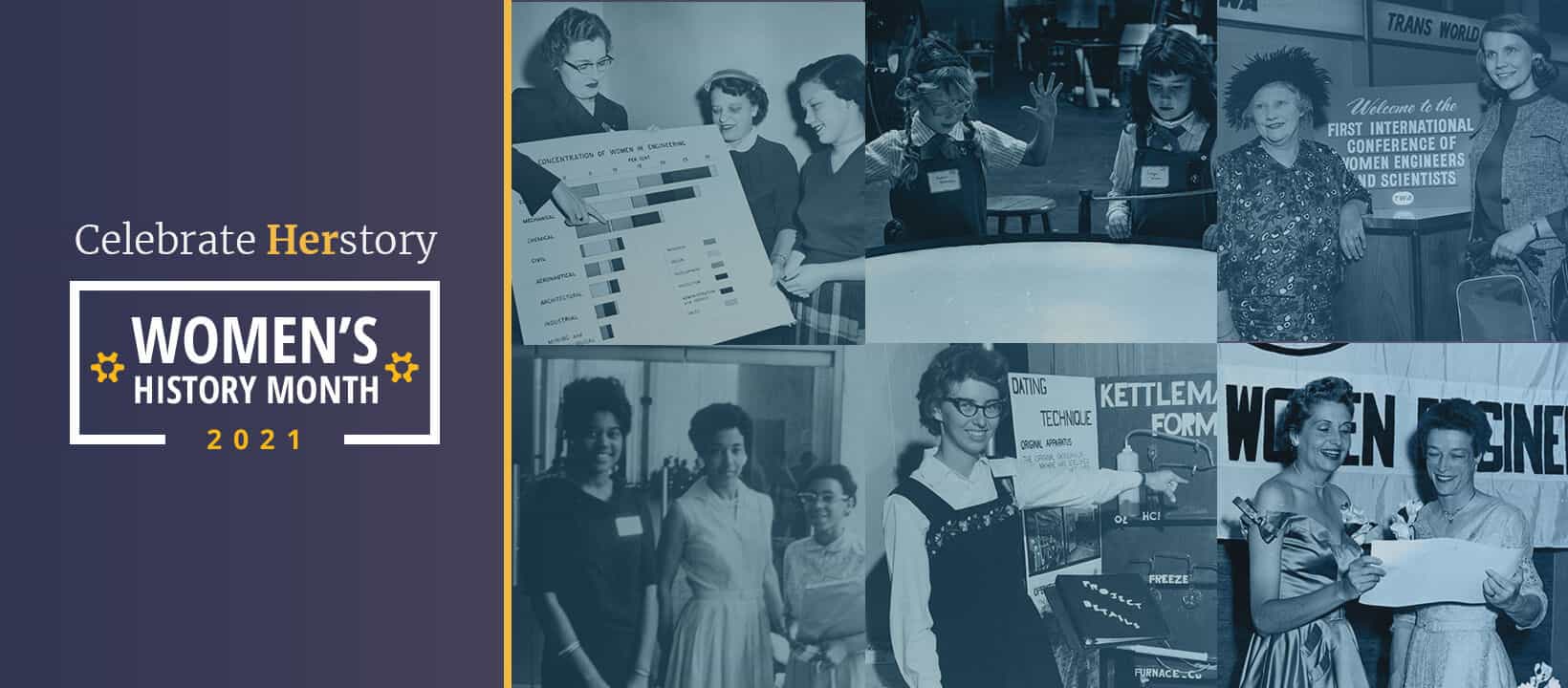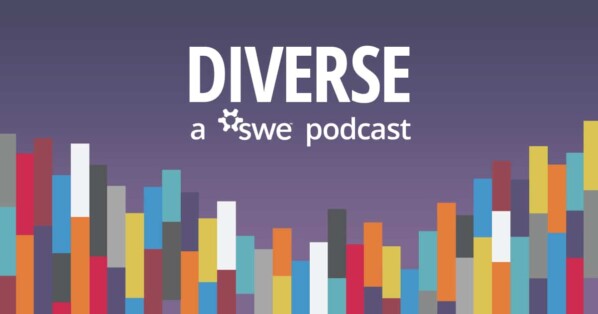In spring 2015, SWE Magazine launched “Women Engineers You Should Know.” Reaching out through SWE’s social media channels, we posed questions to help identify and celebrate the contributions of women who have carried out SWE’s mission with perhaps visibility than some of their more famous sisters, but whose work is no less important.
Since then, “Women Engineers You Should Know” has become an annual project. In honor of Women’s History Month 2021, we look back at that initial group.
In announcing them, we wrote:
“With little fanfare, women engineers make significant contributions every day and lead interesting and fulfilling lives, giving to their profession and communities. Quite often, those who are behind the scenes, out of the limelight, make real change in the workplace and in our communities. It is our intention to recognize such women and make their efforts better known.”
From the spring 2015 issue of SWE Magazine:
Conversation over dinner with a fascinating companion is one of life’s simplest and most satisfying pleasures. If you could have dinner with any woman engineer, living or dead, who would she be?
Mary Barra
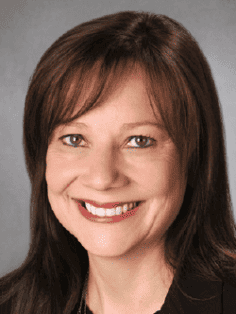 Named CEO of General Motors in January 2014, Mary Barra is the first woman to head one of the “Big Three” automobile companies in the United States. She is also a member of the GM board of directors. An electrical engineer, Barra earned her B.S. from Kettering University, and began her tenure at GM in 1980 as a co-op student. She later earned an MBA from Stanford University, and held a number of positions within GM, including plant manager of Detroit- Hamtramck Assembly, and vice president of global manufacturing engineering, before moving to her current position.
Named CEO of General Motors in January 2014, Mary Barra is the first woman to head one of the “Big Three” automobile companies in the United States. She is also a member of the GM board of directors. An electrical engineer, Barra earned her B.S. from Kettering University, and began her tenure at GM in 1980 as a co-op student. She later earned an MBA from Stanford University, and held a number of positions within GM, including plant manager of Detroit- Hamtramck Assembly, and vice president of global manufacturing engineering, before moving to her current position.
Lillian Moller Gilbreth, Ph.D.
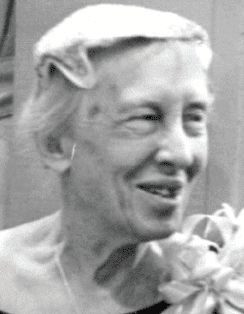 Sometimes referred to as the “first lady of engineering,” Lillian Moller Gilbreth, Ph.D., was the first honorary member of SWE. Dr. Gilbreth and her husband developed motion studies to increase the efficiency of industrial workers, and co-authored a number of books on the subject. She used the techniques derived from the studies to design appliances and equipment to make housework easier, particularly for the disabled. The Society’s first scholarship was named in her honor, and has been granted annually since 1958. Also known as the mother in the book and film, Cheaper by the Dozen, Dr. Gilbreth taught for many years at Purdue University. She died in 1973 at age 93.
Sometimes referred to as the “first lady of engineering,” Lillian Moller Gilbreth, Ph.D., was the first honorary member of SWE. Dr. Gilbreth and her husband developed motion studies to increase the efficiency of industrial workers, and co-authored a number of books on the subject. She used the techniques derived from the studies to design appliances and equipment to make housework easier, particularly for the disabled. The Society’s first scholarship was named in her honor, and has been granted annually since 1958. Also known as the mother in the book and film, Cheaper by the Dozen, Dr. Gilbreth taught for many years at Purdue University. She died in 1973 at age 93.
Kate Gleason
 In 1884, Kate Gleason was the first woman admitted to study engineering at Cornell University in Ithaca, New York. Her family owned Gleason Works, a gear factory in Rochester, and she was frequently required on-site to problem solve and ensure smooth operations, conflicting with her class schedule and forcing her to leave Cornell. Returning home, she completed her education at the Mechanics Institute, later renamed Rochester Institute of Technology. She and her father designed a machine that produced beveled gears quickly and inexpensively, and she became treasurer as well as sales representative for Gleason Works. The first woman president of a U.S. bank, she was also a leader in developing low-income, standardized housing. In 1998, RIT renamed the engineering school in her honor, the Kate Gleason School of Engineering.
In 1884, Kate Gleason was the first woman admitted to study engineering at Cornell University in Ithaca, New York. Her family owned Gleason Works, a gear factory in Rochester, and she was frequently required on-site to problem solve and ensure smooth operations, conflicting with her class schedule and forcing her to leave Cornell. Returning home, she completed her education at the Mechanics Institute, later renamed Rochester Institute of Technology. She and her father designed a machine that produced beveled gears quickly and inexpensively, and she became treasurer as well as sales representative for Gleason Works. The first woman president of a U.S. bank, she was also a leader in developing low-income, standardized housing. In 1998, RIT renamed the engineering school in her honor, the Kate Gleason School of Engineering.
Beatrice Hicks, P.E.
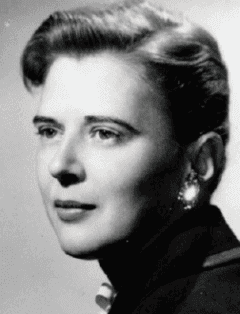 Inspired by the Empire State Building and the George Washington Bridge, Bea Hicks, P.E., told her engineer father that she, too, would become an engineer. She earned degrees in chemical engineering, electrical engineering, and physics. Hicks was the first woman engineer employed by Western Electric Company. She pioneered in the theoretical study, analysis, development, and manufacture of sensing devices; patented a molecular density scanner; and developed an industry model for quality control procedures. In 1950, Hicks was chosen as the first president of the Society of Women Engineers. Five years later, in 1955, she became president of the firm founded by her father, Newark Controls Inc., which designed and manufactured environmental sensing equipment, much of which was used in the NASA space program. Hicks received honorary doctorates in engineering from Rensselaer Polytechnic Institute, Stevens Institute of Technology, and Worcester Polytechnic Institute, and an Honorary Doctor of Science degree from Hobart and William Smith Colleges. Her many awards included the SWE Achievement Award in 1963 and election to the National Academy of Engineering in 1978. She was inducted into the National Women’s Hall of Fame in 2001, and honored by the New Jersey Inventors Hall of Fame in 2013.
Inspired by the Empire State Building and the George Washington Bridge, Bea Hicks, P.E., told her engineer father that she, too, would become an engineer. She earned degrees in chemical engineering, electrical engineering, and physics. Hicks was the first woman engineer employed by Western Electric Company. She pioneered in the theoretical study, analysis, development, and manufacture of sensing devices; patented a molecular density scanner; and developed an industry model for quality control procedures. In 1950, Hicks was chosen as the first president of the Society of Women Engineers. Five years later, in 1955, she became president of the firm founded by her father, Newark Controls Inc., which designed and manufactured environmental sensing equipment, much of which was used in the NASA space program. Hicks received honorary doctorates in engineering from Rensselaer Polytechnic Institute, Stevens Institute of Technology, and Worcester Polytechnic Institute, and an Honorary Doctor of Science degree from Hobart and William Smith Colleges. Her many awards included the SWE Achievement Award in 1963 and election to the National Academy of Engineering in 1978. She was inducted into the National Women’s Hall of Fame in 2001, and honored by the New Jersey Inventors Hall of Fame in 2013.
Hedy Lamarr
 While her fame as a movie star and World War II pinup eclipsed her technical contributions, toward the end of her life Hedy Lamarr began to receive the recognition she deserved for inventing spread spectrum technology. After puzzling over the best method for launching radio-controlled missiles, she and Hollywood composer George Antheil jointly filed a patent for a “secret communications system,” which was granted on Aug. 11, 1942. The significance of the patent became apparent later, with the inventions of the transistor and computer chips. Lamarr’s method is still in use today by cell networks, Bluetooth devices, and Wi-Fi. In 1998, the Electronic Frontier Foundation recognized her contribution to wireless communication with a special award for “blazing a new trail on the electronic frontier.”
While her fame as a movie star and World War II pinup eclipsed her technical contributions, toward the end of her life Hedy Lamarr began to receive the recognition she deserved for inventing spread spectrum technology. After puzzling over the best method for launching radio-controlled missiles, she and Hollywood composer George Antheil jointly filed a patent for a “secret communications system,” which was granted on Aug. 11, 1942. The significance of the patent became apparent later, with the inventions of the transistor and computer chips. Lamarr’s method is still in use today by cell networks, Bluetooth devices, and Wi-Fi. In 1998, the Electronic Frontier Foundation recognized her contribution to wireless communication with a special award for “blazing a new trail on the electronic frontier.”
Ada Byron Lovelace
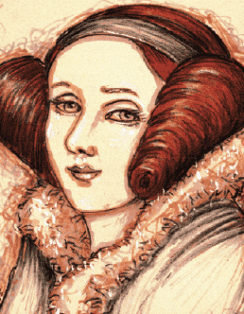 Computer science pioneer Ada Byron Lovelace was the daughter of the famed poet Lord Byron. Educated by private tutors, Lovelace demonstrated strong math and science abilities and was fascinated by her friend Charles Babbage’s ideas for the “analytical engine,” which laid the foundation for modern computers. In 1842, she translated a short article by Italian mathematician Luigi Menabrea describing the analytical engine. Asked by Babbage to expand it, based on her notes and understanding of the machine, she wrote an article, “Sketch of the Analytical Engine, with Notes from the Translator,” that was more than three times the length of the original and included several early computer programs, plus commentary on potential uses of the machine. She is known as the founder of scientific computing.
Computer science pioneer Ada Byron Lovelace was the daughter of the famed poet Lord Byron. Educated by private tutors, Lovelace demonstrated strong math and science abilities and was fascinated by her friend Charles Babbage’s ideas for the “analytical engine,” which laid the foundation for modern computers. In 1842, she translated a short article by Italian mathematician Luigi Menabrea describing the analytical engine. Asked by Babbage to expand it, based on her notes and understanding of the machine, she wrote an article, “Sketch of the Analytical Engine, with Notes from the Translator,” that was more than three times the length of the original and included several early computer programs, plus commentary on potential uses of the machine. She is known as the founder of scientific computing.
Marissa Mayer
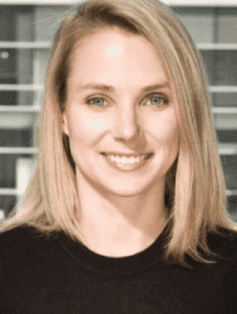 After spending more than 10 years leading the development of Google’s most successful products, Marissa Mayer was appointed CEO of Yahoo in 2012, at age 37. Born in Wisconsin and the daughter of an engineer father and artist mother, Mayer went on to graduate with honors from Stanford with a B.S. in 1997 and an M.S. in computer science in 1999. For both degrees, her specialization was artificial intelligence. She built travel-recommendation software that advised users in natural-sounding human language for her undergraduate thesis. In 2009, the Illinois Institute of Technology granted Mayer an honorary doctorate degree in recognition of her work in the field of search.
After spending more than 10 years leading the development of Google’s most successful products, Marissa Mayer was appointed CEO of Yahoo in 2012, at age 37. Born in Wisconsin and the daughter of an engineer father and artist mother, Mayer went on to graduate with honors from Stanford with a B.S. in 1997 and an M.S. in computer science in 1999. For both degrees, her specialization was artificial intelligence. She built travel-recommendation software that advised users in natural-sounding human language for her undergraduate thesis. In 2009, the Illinois Institute of Technology granted Mayer an honorary doctorate degree in recognition of her work in the field of search.
Wanda Munn
 As a single mom, Wanda Munn decided to return to school rather than remain a secretary in a nuclear engineering department. Earning her B.S. in nuclear engineering in 1977, Munn spent the next 18 years focused on systems design, construction, and operation of the Fast Flux Test Facility for Westinghouse, Hanford. She also received an MBA from the University of Washington in 1982. She has served as an elected council member for the city of Richland, Washington. In 1977, Munn was honored with the McCall Life Pattern Award for women in reentry. In addition, she received the SWE Distinguished New Engineer Award in 1984, and the American Nuclear Society National Public Communications Award in 1988. Munn was named the Tri-Cities Engineer of the Year in 1993, and in 1998 was inducted into the Society of Women Engineers College of Fellows.
As a single mom, Wanda Munn decided to return to school rather than remain a secretary in a nuclear engineering department. Earning her B.S. in nuclear engineering in 1977, Munn spent the next 18 years focused on systems design, construction, and operation of the Fast Flux Test Facility for Westinghouse, Hanford. She also received an MBA from the University of Washington in 1982. She has served as an elected council member for the city of Richland, Washington. In 1977, Munn was honored with the McCall Life Pattern Award for women in reentry. In addition, she received the SWE Distinguished New Engineer Award in 1984, and the American Nuclear Society National Public Communications Award in 1988. Munn was named the Tri-Cities Engineer of the Year in 1993, and in 1998 was inducted into the Society of Women Engineers College of Fellows.
Judith Resnik, Ph.D.
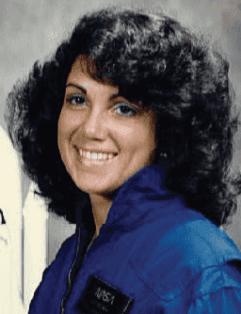 An active SWE member, Judith A. Resnik, Ph.D., was a NASA mission specialist aboard the ill-fated space shuttle Challenger, which broke apart 73 seconds after liftoff on Jan. 28, 1986. Dr. Resnik grew up in Akron, Ohio, and graduated as class valedictorian, scoring a perfect 800 on her college boards. She attended Carnegie Mellon University, earning a B.S. in electrical engineering, followed by graduate school at the University of Maryland, where she earned her master’s and Ph.D. Prior to her 1978 selection by NASA as an astronaut candidate, Dr. Resnik was a biochemical engineer at the National Institutes of Health, and a senior systems engineer at Xerox. A gifted pianist, her hobby was gourmet cooking.
An active SWE member, Judith A. Resnik, Ph.D., was a NASA mission specialist aboard the ill-fated space shuttle Challenger, which broke apart 73 seconds after liftoff on Jan. 28, 1986. Dr. Resnik grew up in Akron, Ohio, and graduated as class valedictorian, scoring a perfect 800 on her college boards. She attended Carnegie Mellon University, earning a B.S. in electrical engineering, followed by graduate school at the University of Maryland, where she earned her master’s and Ph.D. Prior to her 1978 selection by NASA as an astronaut candidate, Dr. Resnik was a biochemical engineer at the National Institutes of Health, and a senior systems engineer at Xerox. A gifted pianist, her hobby was gourmet cooking.
Emily Roebling
 When Emily Roebling’s engineer husband became seriously ill, she took over as project manager for one of the 19th century’s greatest engineering accomplishments — the construction of the Brooklyn Bridge. From 1872-1883, she oversaw the daily construction of the bridge. Not only did she manage the technical aspects, but she also negotiated through a maze of politics, labor difficulties, and threats to halt the project. She received a good deal of positive press at the time, but her contributions were later forgotten. During the 1983 centennial celebrations for the bridge, her work came to light, and there are now two plaques on the bridge honoring her.
When Emily Roebling’s engineer husband became seriously ill, she took over as project manager for one of the 19th century’s greatest engineering accomplishments — the construction of the Brooklyn Bridge. From 1872-1883, she oversaw the daily construction of the bridge. Not only did she manage the technical aspects, but she also negotiated through a maze of politics, labor difficulties, and threats to halt the project. She received a good deal of positive press at the time, but her contributions were later forgotten. During the 1983 centennial celebrations for the bridge, her work came to light, and there are now two plaques on the bridge honoring her.
Related content:
- Inspirational Women in STEM History: Dame Stephanie Shirley
- Women’s History Month Through the Scope of SWE
- Celebrating Women’s History Month
Author
-

SWE Blog provides up-to-date information and news about the Society and how our members are making a difference every day. You’ll find stories about SWE members, engineering, technology, and other STEM-related topics.

